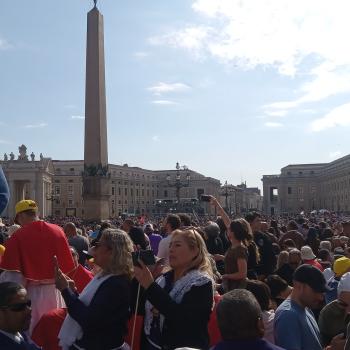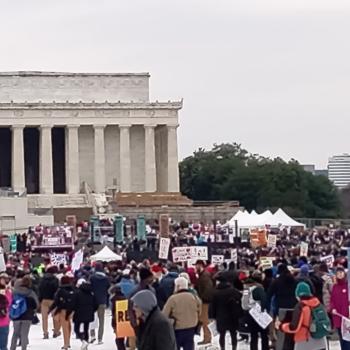Deal Hudson of Inside Catholic addresses a topic that is sure to get some more play in the coming weeks. Over the past half dozen years, there has been a growing call to reinstitute the fairness doctrine and also to bring back into focus the public part of the public air ways. In preparation for this fight, there is a bit of a internicine split with the USCCB (alluded to here and also noted by Mr. Hudson above) being generally supportive and the Catholic Radio Association offering opposition. Depending on what interest group was being affected, there has been a tendency to think that the proposed regulations are about them. For example, people will say that the Fairness Doctrine would take Rush Limbaugh off the air. In my opinion – that and $3 will get you a coffee at Starbucks – he would be as likely to be affected as the odds the FCC will cause The Batchelor to be taken off the air. Admittedly, neither would be a great loss. In the case of Catholic media, we are to believe that they are obviously the ones being targeted.
From my reading around over the years (sorry no links), this act has more to do with Clear Channel than anything else. Yes, Clear Channel owns the syndicate of the Rush Limbaugh program. AM is kind of small potatoes though. The biggest frustration is on the FM side where syndication is taking over almost all the programming. Many of the “news departments” consist of a person, not necessarily in the same city, reading AP wire reports. Some have even eschewed local news altogther. Clear Channel has been a leader in the syndication effort and has a large enough number of radio stations and a heavy enough concentration of radio stations in many markets to almost eliminate local content.
Where Catholic radio has the biggest concerns is in the area of syndicated content. Producing local content is expensive. In its slightly meandering brief, the CRA lists their concerns as follows:
- “a main studio be located within a broadcaster’s community of license”
- staff needed to be maintained in the studio during operating hours
- “establishment of minimum levels of locally-originating programming”
- they also have concerns over local advisory aboards that I won’t get into here other than to offer my opinion that I believe the concerns are over stated. There aren’t commercial offerings of religious content, so I believe Catholic radio could argue accurately that they are serving a valuable niche. Additionally commercial radio stations argue that their offerings of religious programming on weekends help satisfy serving the local community.
As noted, the biggest concern is where syndication fits into the picture. It doesn’t appear to me at this point that syndication is attempted to be ridden. In television we find generally under 15% of the content is locally produced. Likewise on public television, there is no where near a majority of the programming being locally produced. Here in Wisconsin, the PBS stations and public radios stations would include a lot of their statewide coverage as local content.
But again, the big issue isn’t with non-profit and educational programming. The object is with corporate programming. In a different brief on localism, advocates note:
A Pew Research Center study, submitted to the Commission in its media ownership proceedings, reported that at all four major networks, about ¼ of journalists purposely avoided stories, and nearly as many softened the tone of stories, to benefit the interests of their employers. Another study found that both media owners and sponsors pressure reporters to slant the news.65The Commission should not abandon public interest programming requirements as an essential element of broadcast licensing.69
But it should also recognize that these requirements alone will not satisfy the policy goals of localism and diversity, in view of the inevitable tension between these goals and the primarily profit-maximizing interests of commercial broadcasters – a tension that has only been exacerbated by consolidation of media ownership.The tendencies of today’s commercial mass media to pursue efficiency through economies of scale have reduced competition and pushed toward oligopoly or monopoly. Efficiency that results from large economies of scale, however, also leads toward fewer competitors, and can degenerate into abuse of monopoly power. In media markets, the impact reverberates powerfully in the forum for democratic discourse and tends to distort that discourse.
And they cite as a positive:
The immense contribution that low power FM radio (LPFM) is already making to localism has been well-documented. Public interest groups including the Media Access Project and the Future of Music Coalition report that LPFM stations are “increasing diversity in programming, serving minority communities, serving local needs, and enhancing public affairs discussion.” Among the examples they cite are: KOCZ in Opelousas, Louisiana, operated by a community development foundation active in the African-American community and offering public affairs shows, religious programming,[emp. added] and zydeco music;












